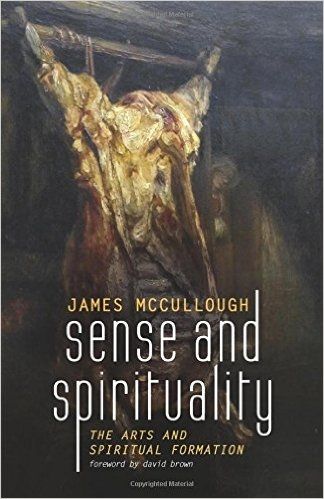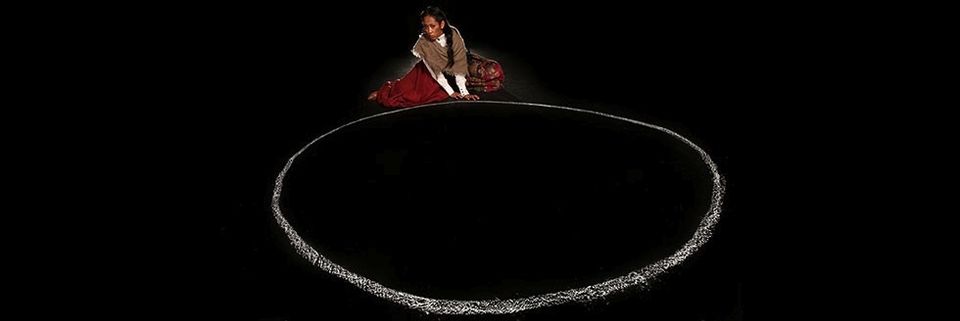CI recently took one of my classes at Wheaton College to an on-campus, student performance of Bertolt Brecht’s The Caucasian Chalk Circle. It was a stirring interpretation of a play that continues to challenge audiences, just as it has since its first performance by students at Carleton College in Minnesota in 1948. For those unfamiliar with the play, it portrays the story of a peasant girl who decides to care for an abandoned baby during wartime. Through her love and self-sacrifice, she proves to be a better caregiver of the child than his wealthy parents.
Later, when we reflected on the performance in our “Philosophy of the Arts” class, we had a vibrant conversation about what makes theatre unique among the arts, the benefits and challenges of live performance, and how our understanding of our embodied existence might be informed by watching a play. We also considered how the love displayed by the peasant girl might point to our call to love our neighbor and how a theatrical performance might enrich our understanding of the incarnation of Jesus Christ.
For theologian James McCullough, while questions about the nature of theatre as a form of art might be interesting, far more important are those questions that will lead to personal transformation. According to McCullough, our class trip to Wheaton’s Arena Theater, like other engagements with the arts, can and should lead to spiritual growth. In Sense and Spirituality: The Arts and Spiritual Formation, McCullough affirms what might be called a practical theology of the arts according to which the arts can serve as a catalyst for spiritual formation. The notion that our perception of the arts should have an impact upon our spiritual formation may come quite naturally to some, though certainly not all, ecclesial traditions and communities. But McCullough seeks to bring together two fields–theological aesthetics and practical theology–that have had limited interaction academically.

Within the growing field of theology and the arts, McCullough stands in the tradition of Nicholas Wolterstorff and others who have maintained that the arts are not primarily something to be contemplated passively. Rather, they should be put to active use and can be agents of change in our lives, which according to McCullough should entail spiritual formation. More particularly, he contends that aesthesis, which is concerned with the perception of art and the development of the imagination, should go hand in hand with ascesis, a term that classically referred to athletic training, but has been adopted and applied to spiritual growth. Or, as he re-phrases it, his argument is concerned with both sense and spirituality, “how skills in sensory perception and imaginative engagement exist in a dialectical relationship with those related to ascetical development or spiritual formation, and how this dialectical relationship can be mediated, enhanced, or catalyzed through encounters with the arts.”[1]
The first half of McCullough’s relatively brief treatment of his topic offers a theoretical framework for what follows. Here, one encounters some of his foundational principles, including the affirmation that art is a form of communication that provides “cognitively valuable content.”[2] In addition, he argues that art is best understood as the amalgamation of three features: the employment of craft, which involves the intentionally communicative use of a disciplined skill; the production of content, which relates to its formal principles and organizing structures; and the dynamics of context, which point to the cultural situatedness of the artist, the artwork, and the audience.
In the second half of the book, McCullough turns to the practical application of his argument by considering three works by confessionally Christian artists in poetry, painting, and music, respectively: T.S. Eliot’s Four Quartets; Makoto Fujimura’s The Four Holy Gospels; and James MacMillan’s Seven Last Words from the Cross. In each case, following a brief introduction to the artist, the particular work is explored in light of its craft, content, and context with an eye towards its applicability to spiritual formation.
Overall, McCullough helpfully draws an explicit connection between aesthesis and ascesis – or, sense and spirituality – and lays the groundwork for further cultivation of this fertile soil. In this regard, he offers a laudable counter to those who fail to recognize that the arts have value beyond their contribution to the history of culture as well as those who fail to see a connection between theological affirmations and the practices of faith.
The book’s brevity makes it quite manageable and accessible, but unfortunately it also means that some aspects of McCullough’s argument are not as developed as they could be. For example, he provides brief vignettes on particular artists or scholars, including Francis Schaeffer, Rembrandt van Rijn, Ludwig van Beethoven, James Loder, and Helen Louise Gardner. These asides are helpful, but they are at times so brief that they leave the reader crying out for more than just a few sentences.
Likewise, while McCullough provides the theoretical framework for the possibility of art serving as a catalyst for spiritual formation, there is little reflection on how these particular works of art might actually lead to spiritual growth. He contends that the arts “catalyze spiritual formation by mediating the dynamics associated with aesthetical and ascetical practices,”[3] and he suggests that spiritual growth “comes about through looking and looking. And listening. And watching. And waiting. And reading. Over and over again.”[4] Encouraging such engagement with the arts with the goal of spiritual growth in mind is surely beneficial, but it leaves several questions unanswered: How, exactly, do such encounters with the arts shape people into more faithful disciples of Jesus Christ? How is this related to prayer, communal worship, the reading of Scripture, and other spiritual disciplines? Why are some experiences of the arts spiritually transformative while others are not?
Related to this, the important question of agency remains unresolved throughout the book. At times, one gets the impression that art itself is the initiator of this spiritually meaningful communicative experience. Surely, the triune God – through the power and presence of the Holy Spirit – plays a role in this encounter that leads to spiritual formation.
As one who teaches philosophical aesthetics, I share McCullough’s view that art is a powerfully communicative medium. That was evident enough after our class trip to the theatre. More importantly, as a Christian and a theologian, I share his hope that our encounters with the arts can lead to spiritual growth. Hopefully, my students walked away from the performance and our class discussion not only with a better understanding of the nature of art but also with a desire to demonstrate the kind of sacrificial love that Christ calls them to show. By God’s grace, the arts can play a role in shaping our spiritual lives and turning us into agents of change.
Sense and Spirituality: The Arts and Spiritual Formation, written by James McCullough, is published by Cascade Books.
[1] James McCullough, Sense and Spirituality, 9.
[2] Ibid., 15.
[3] Ibid., 15 .
[4] Ibid., 111.
*Featured Image from the UBC performance of the The Caucasian Chalk Circle




